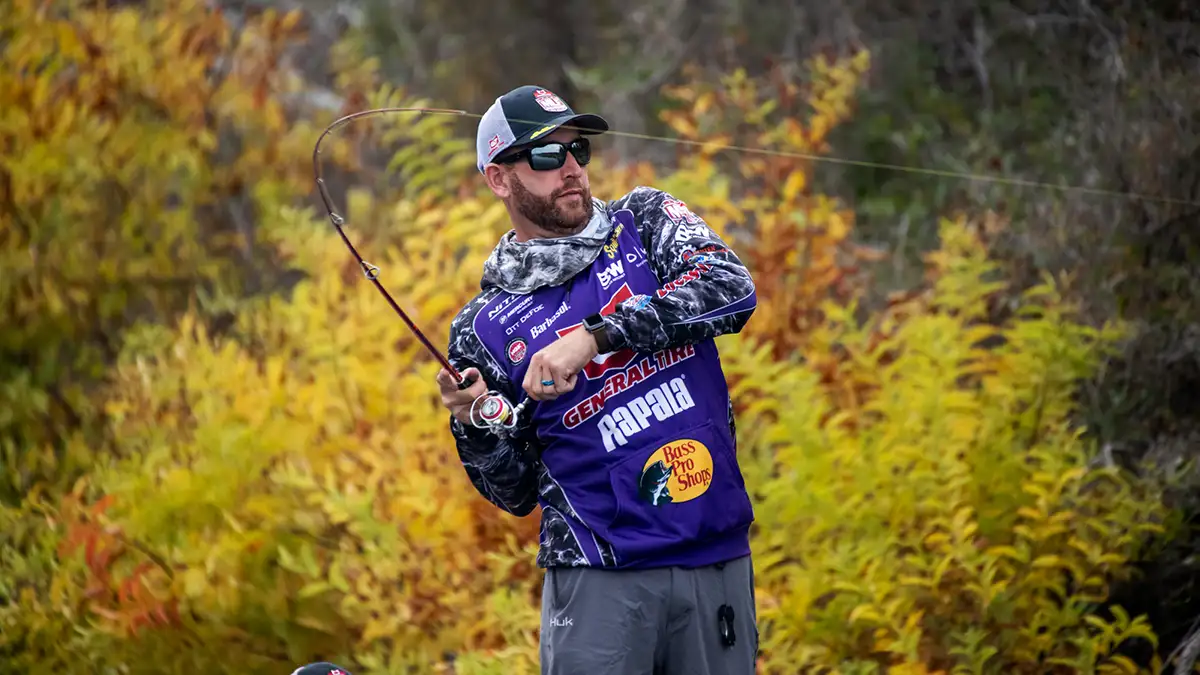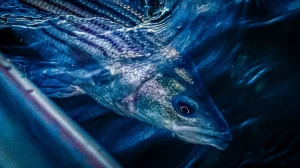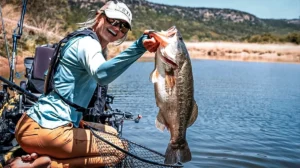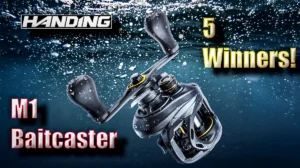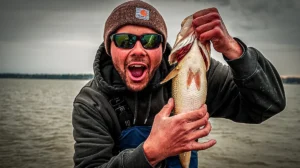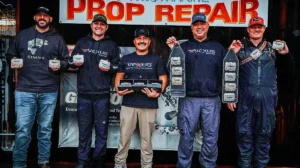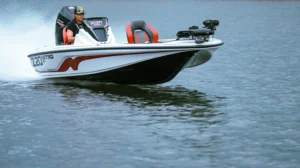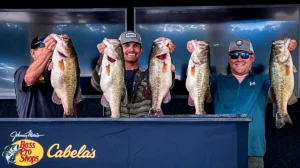Ott DeFoe looks forward to this time of the year. When October’s chill sets in and water temperatures steadily drop, DeFoe can use the lures he made famous, balsa crankbaits, to target big bass.
Years ago, when he was just a teenager, he spent hours in his garage near Knoxville, Tenn., hand-crafting his own brand of wooden lures. Thanks to his self-taught woodworking skills, he carved out a legendary career in professional bass fishing.
Those baits are now part of what is now known as the OG (Ott’s Garage) series, mass-produced by Rapala. DeFoe still puts his stamp of approval on the baits and makes sure they exhibit the same qualities of balsa wood lures that his homemade versions did.
Each fall, he comes full circle and uses the crankbaits he designed to catch big bass in famed Tennessee waters in the eastern part of the state.
“Our region is well-known for some of the guys who used to carve balsa crankbaits,” DeFoe said. “They became local legends and their lures were in demand. Because of the properties of balsa wood, no two were alike. They all had unique qualities, and they caught fish.”
DeFoe’s OG baits still do. Few times of the year do they shine as brightly as they do in fall, he said.
“When the shad move shallow, I’ll target isolated pieces of cover, whether it be wood or rock,” DeFoe said. “I’ll fish as shallow as one foot to three or four feet deep, and that’s perfect for those balsa squarebill crankbaits because they’re so buoyant.”
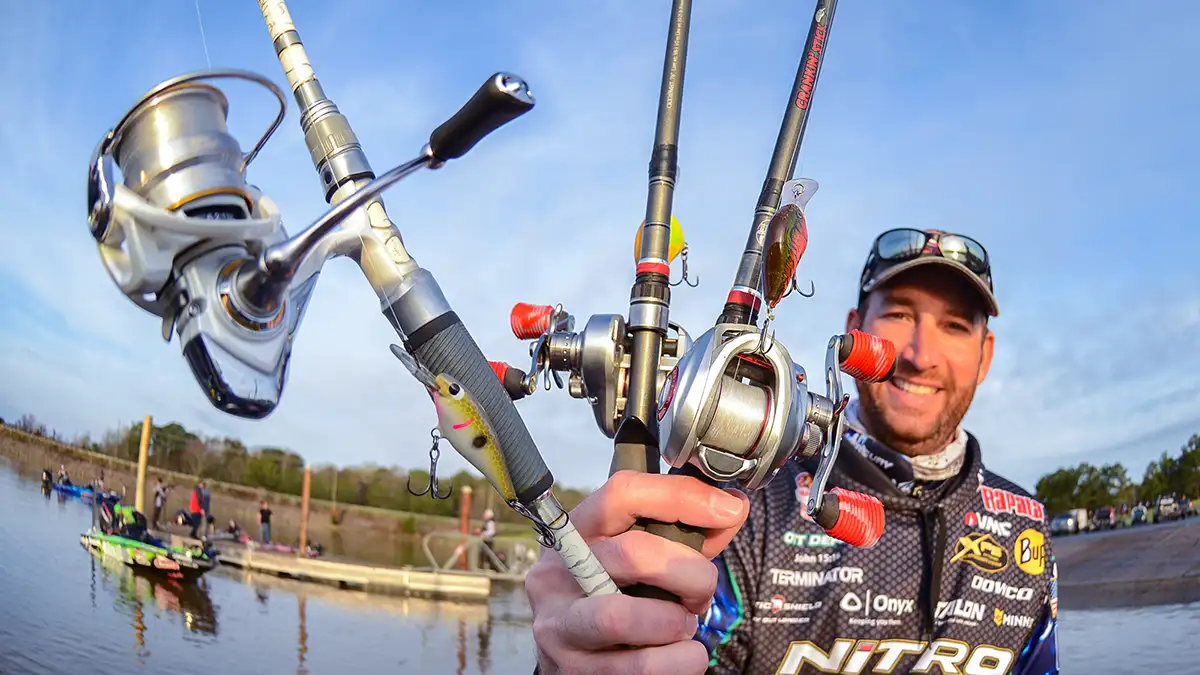
FOLLOW THE {BAIT]FISH
DeFoe likes to go into the back of coves and creek arms where shad concentrate, and retrieve his crankbaits quickly through the brush, laydowns and rocks. He seldom uses a straight retrieve, instead using an erratic cranking style.
Several qualities of balsa-style crankbaits come into play. They rise more slowly than plastic versions, allowing DeFoe to keep the baits in the strike zone for longer periods of time. And they usually are heavier than the plastic baits, allowing for longer casts.
DeFoe uses a Bass Pro Shops 7-foot medium-heavy Crankin’ Stick rod, paired with a Johnny Morris Platinum reel. He finds his best success with XPS 12-pound -test fluorocarbon line. Here are additional details on using Fluorocarbon vs. Monofilament for Crankbait Fishing.
He likes to use shad colors in his crankbaits, even if there is limited water clarity. The Rapala OG Tiny is his favorite bait, matching the profile and size of the forage. It is known for its diminutive size (only 2.25-inches long and a weight of 5/16ths of an ounce), its tight wobble and finesse properties. But he uses other baits such as the Slim and the Rocco in his OG series as well.
It’s finesse crankbaiting at its finest, but it produces big fish, especially in the pre-spawn phase and the fall.
“Balsa crankbaits are one of those all-year baits,” DeFoe said. “About the only situation where I won’t use one is in clear water.”
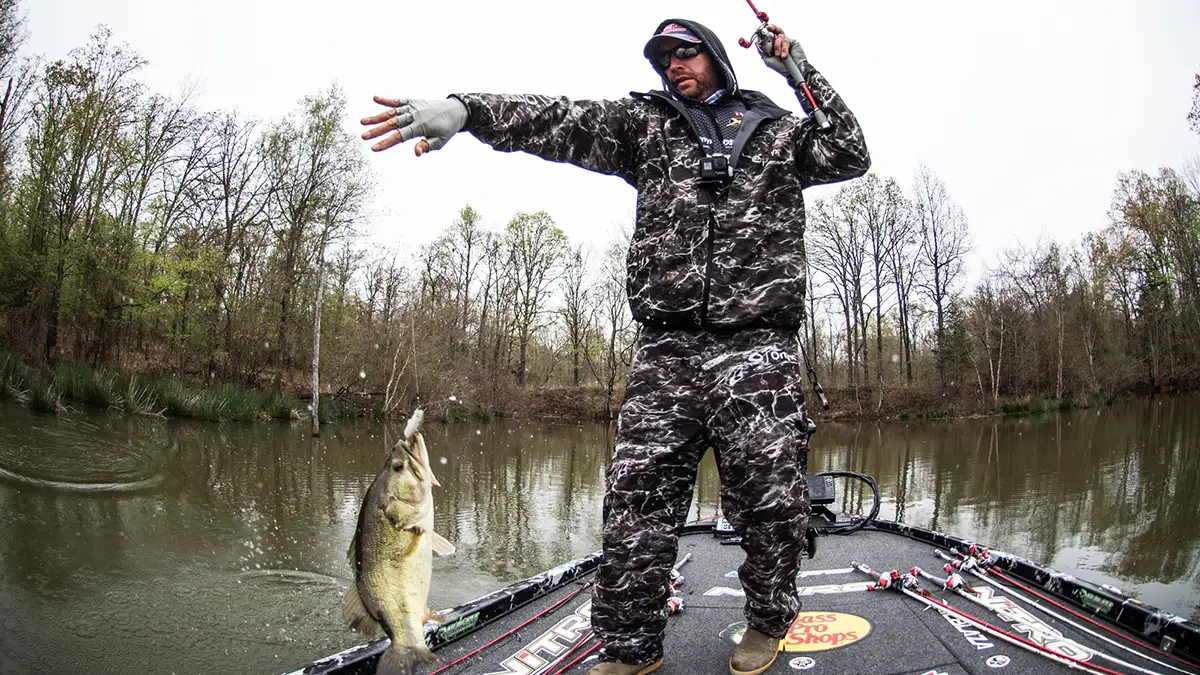
YEARS OF LEARNING
DeFoe grew up using balsa crankbaits. As a teenager he teamed with a friend, Jason Nichols, to fish local tournaments. They consistently did well, using crankbaits carved by Jason’s father, well-known lure maker Steve Nichols.
“There wasn’t a tournament we fished where we didn’t use some of his dad’s baits,” DeFoe recalled. “They seemed to do best in cooler weather. They would run 6 or 7 feet deep, and we would fish them along 45-degree banks and bluff banks. We caught a lot of fish that way.”
Inspired by Nichols’ artistry, DeFoe decided to try making his own balsa crankbaits. Under the tutelage of Nichols, he headed to his garage and used a jigsaw, Exacto knife and sandpaper to fashion his first balsa crankbaits. To say that first batch was an immediate success would be a downright fish story.
“Out of the first 10 I carved, only two ran at all,” said DeFoe, one of the top fishermen on the Major League Fishing’s Bass Pro Tour. “And those two didn’t catch a lot of fish. There was definitely a learning curve. There was a lot of trial and error.”
But DeFoe kept with it. He eventually came up with flat-sided balsa baits that caught bass and catapulted him to national fame. He credits fellow fisherman Gordon Monroe with doing much of the painting of his early baits.
“We set up a barter,” DeFoe said. “I paid him for his painting with my crankbaits. I think he has more of my early baits than I do.”
Today, DeFoe is a legend in the bass fishing game, having won many of the game’s top honors, including the Bassmaster Classic in 2019. But he wouldn’t be where he is today if it weren’t for his homemade crankbaits.
“At the start, my crankbaits were kind of my secret weapons,” DeFoe joked. “But it’s not that way anymore. A lot of people use baits that I have designed, and I’m grateful that they do.”
To learn more details about how to fish a crankbait, go to our article here.


